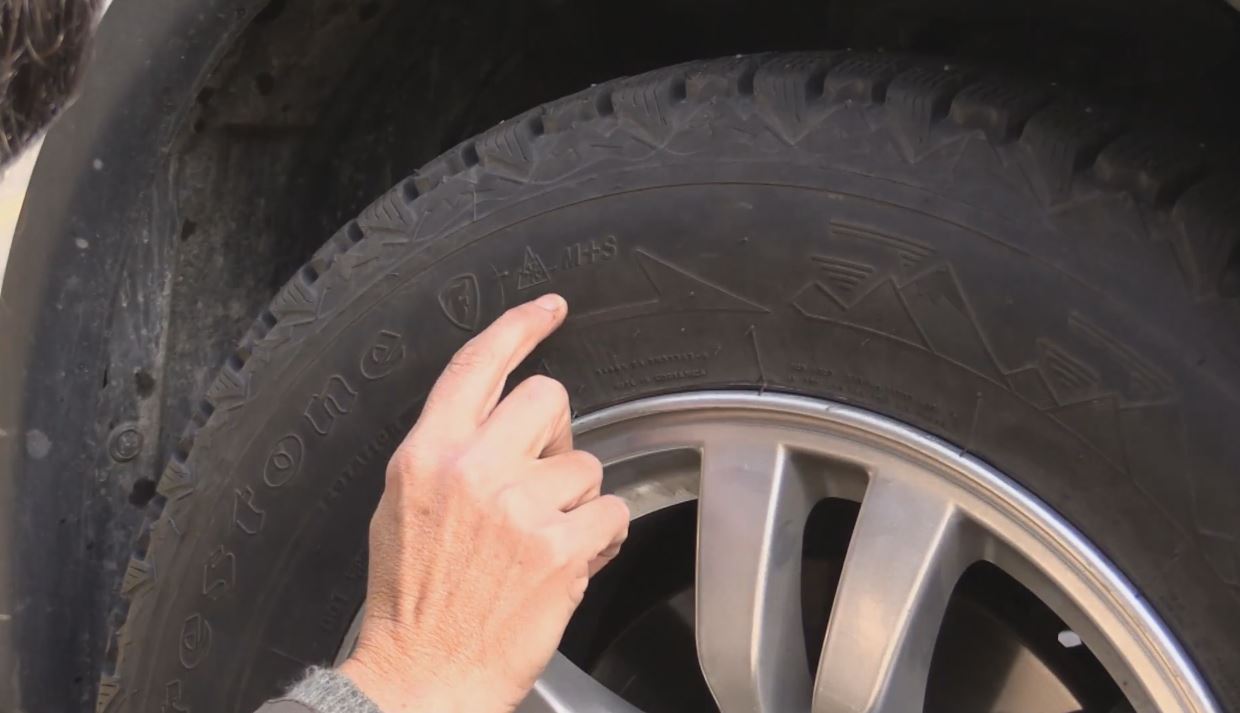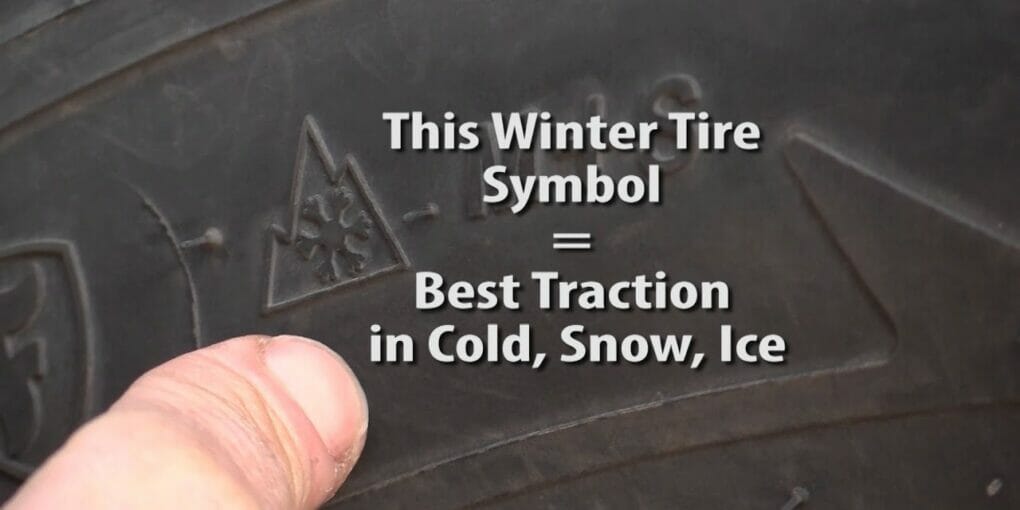How to Recognize Snow Tires
One way to tell if a car has snow tires is by the tread. The tread on snow tires is deeper and more aggressive than all-season tires. This helps the tire grip the road in slippery conditions.
Another way to tell if a car has snow tires is by the material. Snow tires are made of a softer rubber compound than all-season tires. This helps the tire grip the road in cold weather conditions.
- Look for the words “snow” or “winter” on the tire
- These tires are designed specifically for driving in snow and ice
- Look for a deep tread pattern
- The deeper the tread, the better the tire will grip in snow and ice
- Check for special features like studs or siping
- Some snow tires have studs that protrude from the tread to provide extra traction on icy roads
- Others have siping, which are small cuts in the tread that help improve traction on slippery surfaces
What you need to know about winter tires
Tire Symbols Meaning
When you’re shopping for new tires, you’ll notice a variety of symbols on the sidewalls. These markings are required by the U.S. Department of Transportation (DOT) and provide important information about the tire. Here’s a quick guide to what those tire symbols mean:
Tire Type: The first symbol on a tire’s sidewall indicates the type of tire it is. “P” denotes passenger car tires, “LT” means light truck tires, and “T” stands for temporary spare tires.Tire Width: The next symbol indicates the width of the tire in millimeters.
This measurement is taken from sidewall to sidewall, not across the tread.Aspect Ratio: The aspect ratio is represented by a two-digit number following the width symbol. It expresses the height of the tire’s sidewall as a percentage of its width.
For example, an aspect ratio of 50 would indicate that the height of the sidewall is half as tall as the width of the tire. Lower numbers mean shorter sidewalls and a rougher ride, while higher numbers signify taller sidewalls and a smoother ride.Construction: Afterthe aspect ratio, you’ll see either “R” or “D.” “R” signifies radial construction, in which nylon cord plies run perpendicular to each other from bead to bead.
Radial tires are standard on most passenger cars today because they offer good tread life and durability with excellent traction and handling characteristics.”D” denotes bias-ply construction in which nylon cords crisscross each other at an angle between 30 and 40 degrees from bead to bead..
Bias-ply tires were once common but have largely been replaced by radials due to their inferior performance qualities..speed RatingAfterthe construction designation comes a letter code indicating speed rating .
Speed ratings range from “A,” which has a maximum speed capability below 25 mph , all way up to “Y,”with top speeds above 186 mph . Most passenger car tires have speed ratings between S (112 mph ), T(118 mph ), U(124 mph )and H(130 mph ).

Credit: www.tranbc.ca
How Do I Know If I Have Snow Tires?
If you live in an area that experiences a lot of snow and ice during the winter months, it’s a good idea to invest in a set of snow tires. But how do you know if you need them? Here are a few things to consider:
1. The weather in your area. If you live in an area that regularly sees below-freezing temperatures and significant snowfall, then snow tires are a good investment. They’ll provide better traction and handling on icy roads.
2. The type of vehicle you drive. Some vehicles are more susceptible to slipping and sliding on icy roads than others. If you drive a sports car or a luxury vehicle, for example, you may want to consider getting snow tires.
3. Your driving habits. Do you frequently find yourself driving in snowy or icy conditions? If so, then snow tires can help improve your safety on the roadways.
Ultimately, whether or not to get snow tires is up to you and depends on factors like where you live, what kind of vehicle you drive, and how often you find yourself driving in wintry conditions. But if you’re unsure, it’s always best to err on the side of caution and get them!
How Can You Tell the Difference between Snow Tires And Regular Tires?
When winter arrives and the temperatures start to drop, it’s time to think about changing over your tires. But what’s the difference between snow tires and regular tires?Most importantly, snow tires are designed to provide better traction in icy and snowy conditions.
They’re made with a special tread pattern that helps grip the road, and they’re often made from a softer rubber compound that remains pliable in cold weather. Some snow tires also have metal studs embedded in the tread for even better grip on ice.Regular tires, on the other hand, are designed for use in warmer weather and dryer conditions.
They don’t provide as much traction in icy or snowy conditions, and they can become hard and brittle in cold weather.So if you live in an area that gets a lot of snow and ice during the winter months, it’s a good idea to switch to snow tires. It could make all the difference when it comes to safety on the roads.
How Do I Know If My Tires are Summer Or Winter?
Most people don’t realize that there is a difference between summer and winter tires. Summer tires are designed to provide optimal performance in warm weather conditions, while winter tires are specifically engineered to provide superior traction and handling in cold weather and on snow-covered roads. So, how can you tell if your tires are summer or winter?
One way to tell is by looking at the tread pattern. Summer tires typically have shallower tread depths than winter tires. This helps them maintain good contact with the road surface for better grip, but it also means that they wear down faster in warmer conditions.
Winter tires, on the other hand, have deeper tread depths which help them bite into snow and ice for better traction.Another way to tell if your tires are summer or winter is by looking at the sidewall markings. Most summer tires will have a “S” (for example: P225/50R16 89S) or “T” speed rating (for example: P215/60R16 95T), while most winter tires will have a “Q” speed rating (for example: 225/50R18 98Q).
The speed rating tells you how fast the tire can safely go; the higher the number, the higher the speed. So, if you see a “T” speed rating on a tire, that means it’s rated for speeds up to 118 mph; if you see a “Q” speed rating, that means it’s rated for speeds up to 99 mph.Finally, another way to tell if your tires are summer or winter is by their compound.
Summer tire compounds are designed to be softer than those of winter tires; this helps them provide better grip on warm pavement but also causes them to wear down faster. Winter tire compounds are designed to be harder than those of summer tyres; this helps them stay flexible in cold temperatures and provides better traction on snow and ice.
Do All Weather Tires Have the Snowflake Symbol?
Most weather tires will have the snowflake symbol on them. This means that they have been designed to perform well in cold weather and winter conditions. The snowflake symbol indicates that the tire has been tested and approved for use in these conditions.
Conclusion
If you live in an area where it snows, you know how important it is to have good snow tires on your car. But how can you tell if a tire is a good snow tire? Here are some things to look for:
The treads on snow tires are deeper than regular tires, which gives them better traction in the snow. Look for tires with deep, wide treads.Snow tires also have special grooves and siping (tiny cuts in the tread) that help them grip the road better.
Some snow tires are made with special compounds that stay flexible in cold weather, so they grip the road better. These are called winter or all-season tires.


